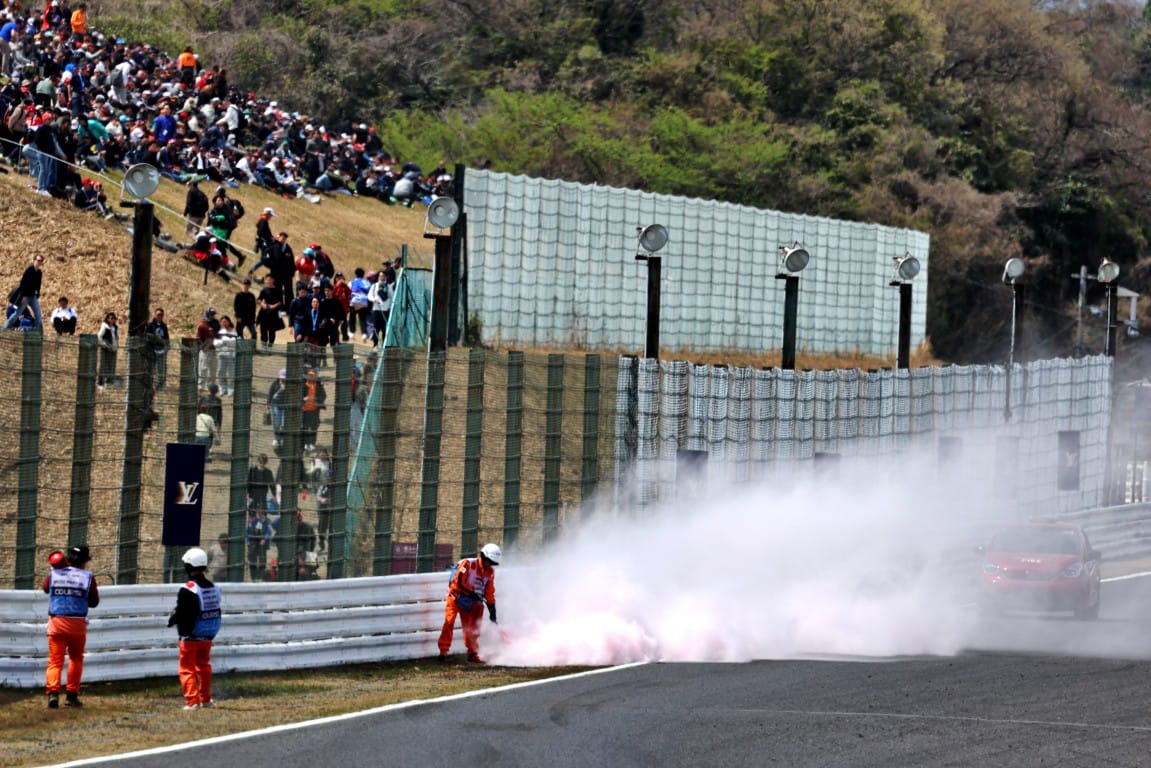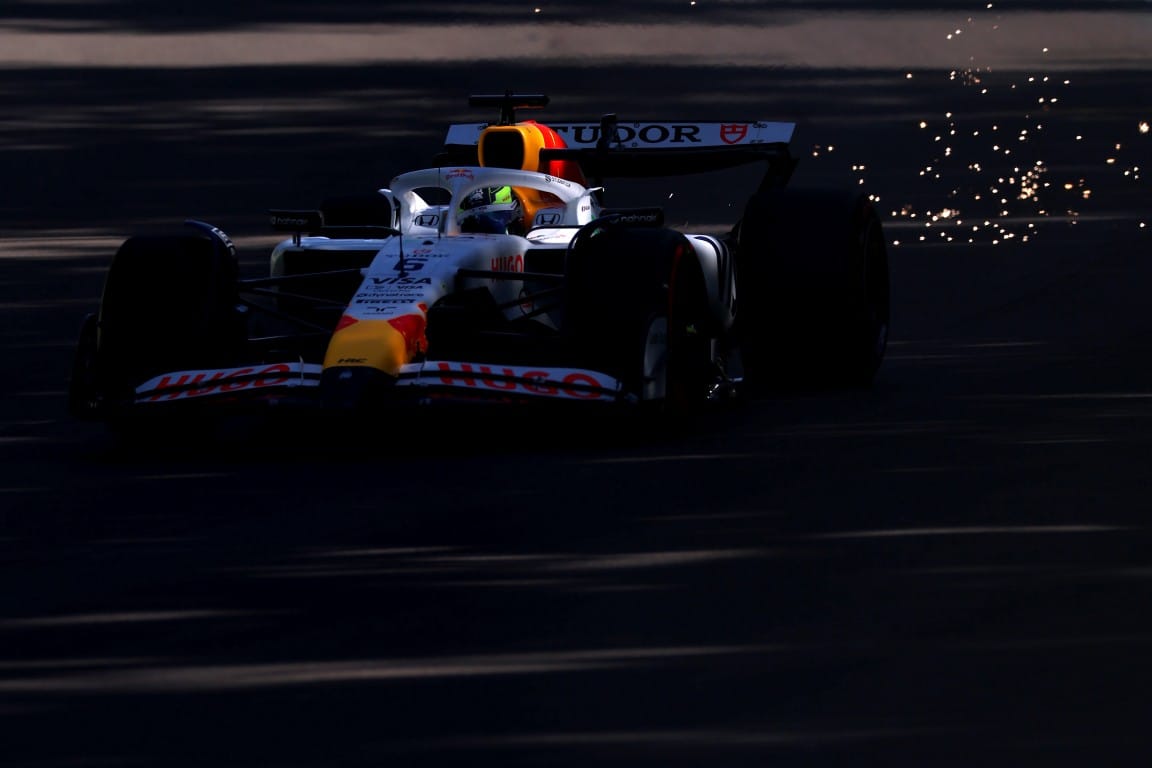Formula 1 teams are to conduct tests with steel skids blocks at this weekend’s Spanish Grand Prix as the FIA pushes on with its idea to avoid grass fires.
Problems at the Japanese Grand Prix in April, with sparks thrown off the standard titanium skid blocks igniting dry grass that surrounded the track, prompted fears of repeat issues later in the campaign.
The worries have been increased by the fact that teams have learned how to run their cars closer to the ground this year, which means sparks being thrown off the skid blocks that protect the underfloor plank are more common.
The FIA believes that a move to steel skid blocks for some races will help address the problem, because the shards of this metal react in a different way when they are shaved off – which is what creates the sparks.
Titanium is understood to have been problematic because its shards are white hot and retain their heat for a long time – so can ignite dried grass long after they have landed.
Steel, on the other hand, does not reach such a high temperature and cools down much quicker – so would be much less likely to trigger fires.

The idea of moving to steel skid blocks for venues that are surrounded by grass was discussed at the most recent meeting of the Formula 1 Commission, but did not receive universal support from teams.
There were understood to be concerns about the extra weight of steel skid blocks compared to titanium, which will add around 750 grammes to the car, plus the fact that the new material wears much quicker than titanium because it is not as tough.
If the plan for skid blocks is pushed through then it could hurt those teams already over the weight limit, as well as force everyone to potentially lift their cars higher than they normally run them to avoid the steel blocks wearing away too much.
This could add a fresh technical headache to those squads who have found that their cars are ride height-sensitive.
It was also argued that it would be much cheaper and simpler for race organisers to water grass or spray it with fire retardant than it would be to force teams to make changes to their cars.
The FIA wants to push on with the idea though, and an evaluation of the new materials will take place in practice in Barcelona.
Although the details of the plan have not been published, it is understood that one car from each team will run with the steel skid blocks on Friday at some point in a bid to better understand the implications.

The results of the test will then decide if the FIA pushes on with a plan to make the steel skid blocks mandatory at those venues where there is a risk of grass fires.
In its original communication to teams about the idea ahead of the F1 Commission, it had laid out how the calendar would be divided up based upon the types of tracks being raced on – with some events using steel skid blocks and some sticking with titanium.
Should the Spain test prove successful, then the remainder of the 2025 could look like this.
Steel skid block races
Canada, Austria, Britain, Belgium, Hungary, Netherlands, Italy, US, Mexico, Brazil
Titanium skid block races
Azerbaijan, Singapore, Las Vegas, Qatar, Abu Dhabi



